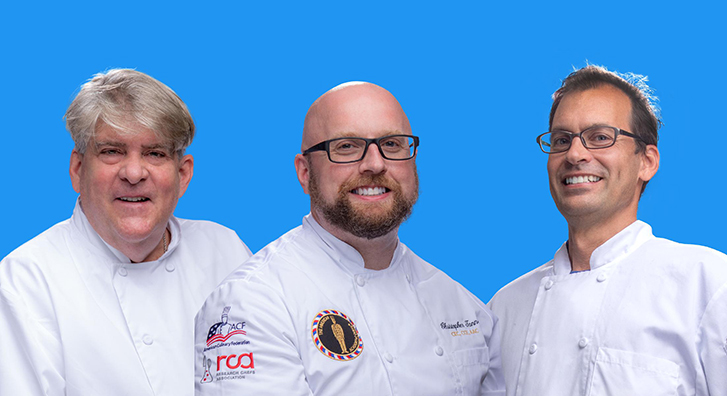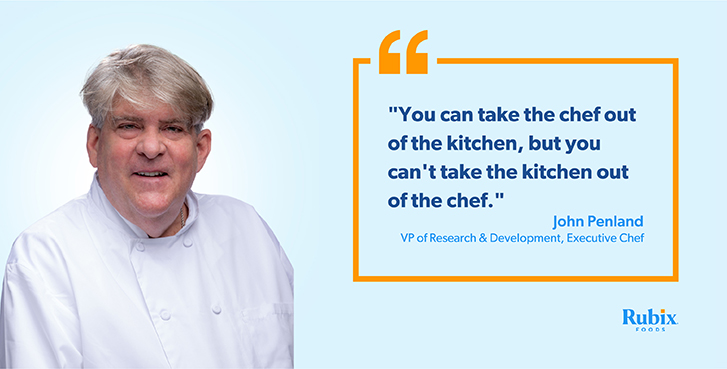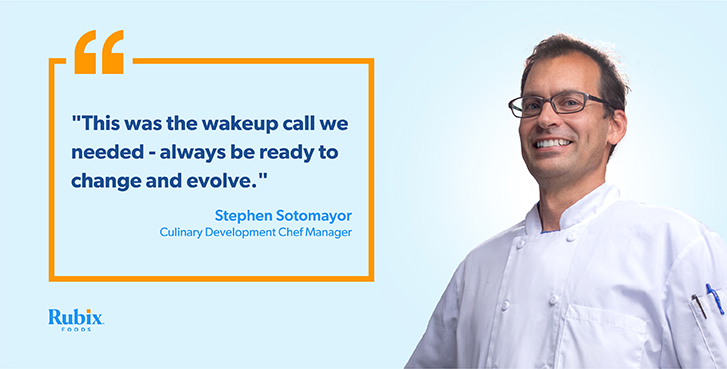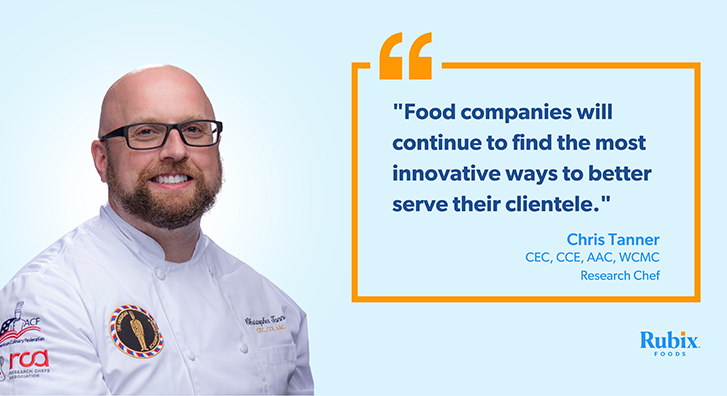
On March 11, 2020, the World Health Organization declared COVID-19 a pandemic. Four days later, state-mandated bar and restaurant shutdowns began1… and the rest, well, is history. We’ve all learned a lot since COVID began, but chefs in particular had to pass some of the hardest lessons. As we approach the two year anniversary of shutdowns, members of our marketing and culinary teams sat down to reflect on one of the most challenging times of their careers and how the pandemic forever changed the culinary profession.
Shannon O’Shields, VP of Marketing: Okay Chefs, let’s take a walk down memory lane. It’s March 2020, you’re hearing about COVID on the news, we learn about the first cases in NYC, the CDC and WHO label it a pandemic, travel bans and shutdowns begin… when did you fully grasp the gravity of the situation?
Chef John Penland, VP of R&D and Executive Chef: I didn’t really grasp the severity until the stay-at-home mandates were announced. Being in the food industry for 45 years, it was really hard to see the impact it had on people I’ve met throughout my career. But, we just had to go into survival mode to keep servicing our customers in the safest possible way.
Chef Stephen Sotomayor (Soto), Culinary Development Chef Manager: It really hit me seeing how empty the streets and highways were, and then finally having to transition to working from home.
Hanna Ninya, Marketing Manager: This industry has historically thrived on face-to-face interactions, so quick adjustments had to be made to keep businesses running remotely. What were some of the immediate changes you made, and how were they received?
Chef Chris Tanner, Research Chef: We shifted to virtual presentations almost immediately. We sent samples to customers, cooked with them, tasted with them… and we did it all over video. It was a challenge, but we formed closer relationships because we were connecting more frequently in shorter stints.
Chef John: Taking note from the home meal replacement brands, we started to ship out meal kits that included product samples and white paper concepts directly to some of our customers’ homes. I guess the one thing that didn’t change was the importance of getting food in the hands and mouths of our customers… and that worked out well for us. We’re still doing it!

Shannon: The restaurant industry has struggled with labor for years, but the pandemic brought the underlying issue to light. We’re seeing that 7 out of 10 operators don’t have enough labor to maintain consumer demand.2 Do you think COVID was the tipping point?
Chef John: Absolutely. Labor has always been an issue, but it’s been managed and protected from the consumer until now. The pandemic changed all that. We think very differently about what it means to be an “essential worker” today … food is essential. The chain restaurants and small operators are still recovering, and they’re the ones that are going to feel this labor shortage long-term unless they make adjustments to how they work. And we’re trying to help them with that in a number of ways.
Chef Soto: People who work in the restaurant and hospitality industry are tough. It was, and in some ways still is, a scary time. But change can be good, and as chefs, we can’t become lazy or stagnant. If we get knocked down, we need to get up, keep going, and learn from our mistakes. The pandemic was a needed push to look at the way hotels, restaurants and food companies operate. It brought to light problems that our team can now go solve for customers… problems always present opportunities.

Hanna: The labor shortage has had a massive impact on the food industry’s supply chain, too. How has that changed your day-to-day?
Chef John: Collaboration is key to responding to supply chain challenges. Our R&D and Supply Chain teams are attached at the hip these days. We’re seeing a lot of raw material shortages, so that means we’re doing a lot of reformulations and flavor matching – but that’s what we do and what we’ve always done. We’re the problem-solving guys… so this isn’t new for us. We’re just getting better and better at it.
Shannon: What has surprised you most about the food industry’s response to COVID?
Chef Chris: How quickly companies adapted to technology advancements… touchless payment systems, online ordering, even the development of robots to help alleviate some of the stresses of the labor shortage. Virtual presentations and meetings will continue to be a part of “the new normal,” too. That’s why we’ve equipped the Rubix Foods Innovation Center with cutting-edge audio and visual technology making virtual demos easier than ever.

Hanna: As a chef, what’s the biggest lesson that you will take away from the past two years?
Chef John: Chefs have to work smarter.
Chef Chris: Never stop innovating.
Chef Soto: The show must go on.
For us, the takeaway has been simple: The food industry is resilient – not because it’s essential, but because of the incredible passion and talent of those who’ve invested their lives in making it so. If you’re one of them, we thank you for your contributions over the past two years and look forward to what the future “new normal” holds for all of us.
Does your business need a booster? Sure, we aren’t doctors, but we are a team of movers, shakers and tastemakers who can help your operation recover from the long-term effects of COVID. Tell us more about the problems you’re facing and our experts will be in touch.